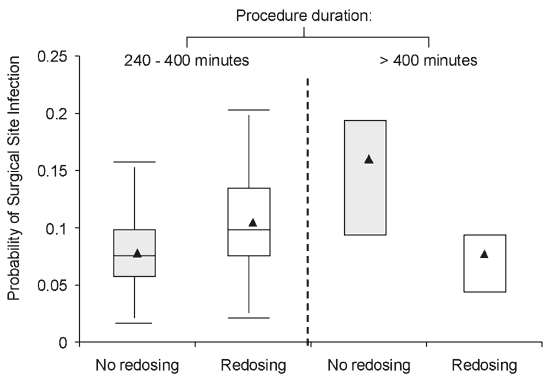Volume 7, Number 5—October 2001
Research
Intraoperative Redosing of Cefazolin and Risk for Surgical Site Infection in Cardiac Surgery
Figure

Figure. . Effect of intraoperative redosing of cefazolin on the probability of surgical site infection. Box-and-whisker plots represent the probabilities of surgical site infection in 1,548 patients undergoing cardiac surgery, stratified by procedure duration, with or without intraoperative redosing of cefazolin. The probabilities for each member of the cohort were computed on the basis of redosing of antibiotic prophylaxis, the patient's age, and the type and duration of the procedure. The mean is represented by a triangle and the median by a bar within the boxes. There is no bar for procedures >400 min in duration because all the probabilities were clustered at the extremities of the boxes.
Page created: April 26, 2012
Page updated: April 26, 2012
Page reviewed: April 26, 2012
The conclusions, findings, and opinions expressed by authors contributing to this journal do not necessarily reflect the official position of the U.S. Department of Health and Human Services, the Public Health Service, the Centers for Disease Control and Prevention, or the authors' affiliated institutions. Use of trade names is for identification only and does not imply endorsement by any of the groups named above.